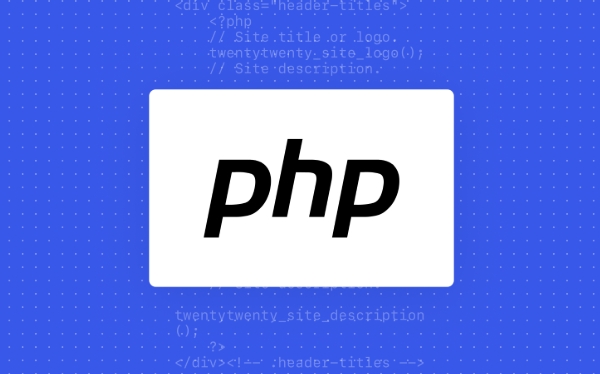How would you implement API versioning in a PHP application?
API versioning in PHP can be effectively implemented using URL, header, or query parameter approaches, with URL and header versioning being most recommended. 1. For URL-based versioning, include the version in the route (e.g., /v1/users) and organize controllers in versioned directories, routing requests via framework route groups (e.g., Laravel’s prefix). 2. For header-based versioning, use the Accept or a custom header (e.g., X-API-Version: 1), then read the header in middleware to route requests accordingly. 3. Query parameter versioning involves appending version=1 to URLs, extracting it from $_GET, and routing dynamically. Best practices include avoiding breaking changes, deprecating fields instead, documenting versions with OpenAPI, supporting fallbacks to the latest stable version, and returning deprecation warnings in headers. Structure code using namespaces (e.g., App\Api\V1\Controllers) for separation, and consider using version-specific transformers over duplicated logic. Consistency and forward planning are key to maintaining scalable and maintainable APIs.

API versioning in a PHP application helps maintain backward compatibility and allows gradual updates without breaking existing clients. Here’s how you can implement it effectively:

1. URL-Based Versioning
One of the most common and straightforward approaches is including the version in the URL.
Example:

https://api.example.com/v1/users https://api.example.com/v2/users
Implementation:
Organize your code by version in directories:

/api/v1/UsersController.php /api/v2/UsersController.php
Route requests based on the URL segment using a router (e.g., Slim, Laravel, or custom dispatcher).
In a framework like Laravel:
Route::prefix('v1')->group(function () { Route::get('/users', [V1\UsersController::class, 'index']); }); Route::prefix('v2')->group(function () { Route::get('/users', [V2\UsersController::class, 'index']); });
✅ Simple and intuitive
❌ Can clutter URLs and may complicate caching or SEO (less relevant for APIs)
2. Header-Based Versioning
Pass the API version in a request header, such as Accept or a custom header.
Example:
Accept: application/vnd.example.v1 json OR X-API-Version: 1
Implementation:
- Read the header in middleware or bootstrap:
$version = $_SERVER['HTTP_ACCEPT'] ?? ''; if (strpos($version, 'v1') !== false) { // Route to v1 } elseif (strpos($version, 'v2') !== false) { // Route to v2 } - Use content negotiation to decide controller or serializer.
✅ Keeps URLs clean
❌ Less visible and harder to test/debug directly in browser
3. Query Parameter Versioning
Include version as a query parameter.
Example:
https://api.example.com/users?version=1 https://api.example.com/users?api_version=2
Implementation:
- Extract version from
$_GET:$version = $_GET['version'] ?? '1';
- Use a factory or router to instantiate the correct controller.
✅ Easy to test and implement
❌ Not RESTful; version becomes part of state, not resource
4. Best Practices & Recommendations
- Use URL or Header versioning — these are most widely accepted.
- Avoid breaking changes in the same version. Deprecate fields instead.
- Document versions clearly — use OpenAPI/Swagger to track changes.
- Support version fallbacks — default to latest stable if no version is specified.
- Deprecation strategy — return
Warningheaders or sunset dates.
For example:
Warning: 299 - "API version v1 is deprecated. Use v2 by 2025-01-01."
5. Structure Your Code for Scalability
Use namespaces and service layers:
namespace App\Api\V1\Controllers;
class UserController { ... }
namespace App\Api\V2\Controllers;
class UserController { ... }This keeps logic separated and avoids conflicts.
You can also use a version-agnostic core with version-specific transformers or serializers to format output differently per version.
Basically, pick a method that fits your team and clients. URL-based is often easiest for public APIs, while header-based is cleaner for machine-to-machine communication. The key is consistency and planning for evolution.
The above is the detailed content of How would you implement API versioning in a PHP application?. For more information, please follow other related articles on the PHP Chinese website!

Hot AI Tools

Undress AI Tool
Undress images for free

Undresser.AI Undress
AI-powered app for creating realistic nude photos

AI Clothes Remover
Online AI tool for removing clothes from photos.

Clothoff.io
AI clothes remover

Video Face Swap
Swap faces in any video effortlessly with our completely free AI face swap tool!

Hot Article

Hot Tools

Notepad++7.3.1
Easy-to-use and free code editor

SublimeText3 Chinese version
Chinese version, very easy to use

Zend Studio 13.0.1
Powerful PHP integrated development environment

Dreamweaver CS6
Visual web development tools

SublimeText3 Mac version
God-level code editing software (SublimeText3)
 Object-Relational Mapping (ORM) Performance Tuning in PHP
Jul 29, 2025 am 05:00 AM
Object-Relational Mapping (ORM) Performance Tuning in PHP
Jul 29, 2025 am 05:00 AM
Avoid N 1 query problems, reduce the number of database queries by loading associated data in advance; 2. Select only the required fields to avoid loading complete entities to save memory and bandwidth; 3. Use cache strategies reasonably, such as Doctrine's secondary cache or Redis cache high-frequency query results; 4. Optimize the entity life cycle and call clear() regularly to free up memory to prevent memory overflow; 5. Ensure that the database index exists and analyze the generated SQL statements to avoid inefficient queries; 6. Disable automatic change tracking in scenarios where changes are not required, and use arrays or lightweight modes to improve performance. Correct use of ORM requires combining SQL monitoring, caching, batch processing and appropriate optimization to ensure application performance while maintaining development efficiency.
 VSCode settings.json location
Aug 01, 2025 am 06:12 AM
VSCode settings.json location
Aug 01, 2025 am 06:12 AM
The settings.json file is located in the user-level or workspace-level path and is used to customize VSCode settings. 1. User-level path: Windows is C:\Users\\AppData\Roaming\Code\User\settings.json, macOS is /Users//Library/ApplicationSupport/Code/User/settings.json, Linux is /home//.config/Code/User/settings.json; 2. Workspace-level path: .vscode/settings in the project root directory
 Building Immutable Objects in PHP with Readonly Properties
Jul 30, 2025 am 05:40 AM
Building Immutable Objects in PHP with Readonly Properties
Jul 30, 2025 am 05:40 AM
ReadonlypropertiesinPHP8.2canonlybeassignedonceintheconstructororatdeclarationandcannotbemodifiedafterward,enforcingimmutabilityatthelanguagelevel.2.Toachievedeepimmutability,wrapmutabletypeslikearraysinArrayObjectorusecustomimmutablecollectionssucha
 css dark mode toggle example
Jul 30, 2025 am 05:28 AM
css dark mode toggle example
Jul 30, 2025 am 05:28 AM
First, use JavaScript to obtain the user system preferences and locally stored theme settings, and initialize the page theme; 1. The HTML structure contains a button to trigger topic switching; 2. CSS uses: root to define bright theme variables, .dark-mode class defines dark theme variables, and applies these variables through var(); 3. JavaScript detects prefers-color-scheme and reads localStorage to determine the initial theme; 4. Switch the dark-mode class on the html element when clicking the button, and saves the current state to localStorage; 5. All color changes are accompanied by 0.3 seconds transition animation to enhance the user
 go by example http middleware logging example
Aug 03, 2025 am 11:35 AM
go by example http middleware logging example
Aug 03, 2025 am 11:35 AM
HTTP log middleware in Go can record request methods, paths, client IP and time-consuming. 1. Use http.HandlerFunc to wrap the processor, 2. Record the start time and end time before and after calling next.ServeHTTP, 3. Get the real client IP through r.RemoteAddr and X-Forwarded-For headers, 4. Use log.Printf to output request logs, 5. Apply the middleware to ServeMux to implement global logging. The complete sample code has been verified to run and is suitable for starting a small and medium-sized project. The extension suggestions include capturing status codes, supporting JSON logs and request ID tracking.
 edge pdf viewer not working
Aug 07, 2025 pm 04:36 PM
edge pdf viewer not working
Aug 07, 2025 pm 04:36 PM
TestthePDFinanotherapptodetermineiftheissueiswiththefileorEdge.2.Enablethebuilt-inPDFviewerbyturningoff"AlwaysopenPDFfilesexternally"and"DownloadPDFfiles"inEdgesettings.3.Clearbrowsingdataincludingcookiesandcachedfilestoresolveren
 Java Performance Optimization and Profiling Techniques
Jul 31, 2025 am 03:58 AM
Java Performance Optimization and Profiling Techniques
Jul 31, 2025 am 03:58 AM
Use performance analysis tools to locate bottlenecks, use VisualVM or JProfiler in the development and testing stage, and give priority to Async-Profiler in the production environment; 2. Reduce object creation, reuse objects, use StringBuilder to replace string splicing, and select appropriate GC strategies; 3. Optimize collection usage, select and preset initial capacity according to the scene; 4. Optimize concurrency, use concurrent collections, reduce lock granularity, and set thread pool reasonably; 5. Tune JVM parameters, set reasonable heap size and low-latency garbage collector and enable GC logs; 6. Avoid reflection at the code level, replace wrapper classes with basic types, delay initialization, and use final and static; 7. Continuous performance testing and monitoring, combined with JMH
 Using PHP for Data Scraping and Web Automation
Aug 01, 2025 am 07:45 AM
Using PHP for Data Scraping and Web Automation
Aug 01, 2025 am 07:45 AM
UseGuzzleforrobustHTTPrequestswithheadersandtimeouts.2.ParseHTMLefficientlywithSymfonyDomCrawlerusingCSSselectors.3.HandleJavaScript-heavysitesbyintegratingPuppeteerviaPHPexec()torenderpages.4.Respectrobots.txt,adddelays,rotateuseragents,anduseproxie








